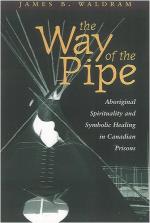|
This section contains 13,757 words (approx. 46 pages at 300 words per page) |

|
In the positive sense myth is a charter for and a guide to action, though not necessarily socially approved action. Although myth is not always linked directly to religious ritual, the most important myths usually have a two-way, mutually supportive relationship with ritual. A myth may stipulate, explain, or describe a rite or outline a sequence of events that, when translated into ritual action, emphasizes different facets of its mythic counterpart.
As nonliterate peoples, the Aborigines relied almost entirely on oral transmission. Other modes of communication were supplementary and, like spoken languages and dialects, regionally based: hand-sign vocabularies, material representations, body markings, ritual and ceremonial posturing and dance, and gestures and facial expressions. These, like myth, illustrate the crisscrossing of similarity and diversity in traditional Aboriginal culture throughout the continent, as well as the balance between local and outward-looking orientations.
Mythic characters...
|
This section contains 13,757 words (approx. 46 pages at 300 words per page) |

|



![View Australian Indigenous Religions Mythic Themes [further Considerations]](https://d22o6al7s0pvzr.cloudfront.net/images/bookrags/aero300/content/btn_next.png?1706062909)
